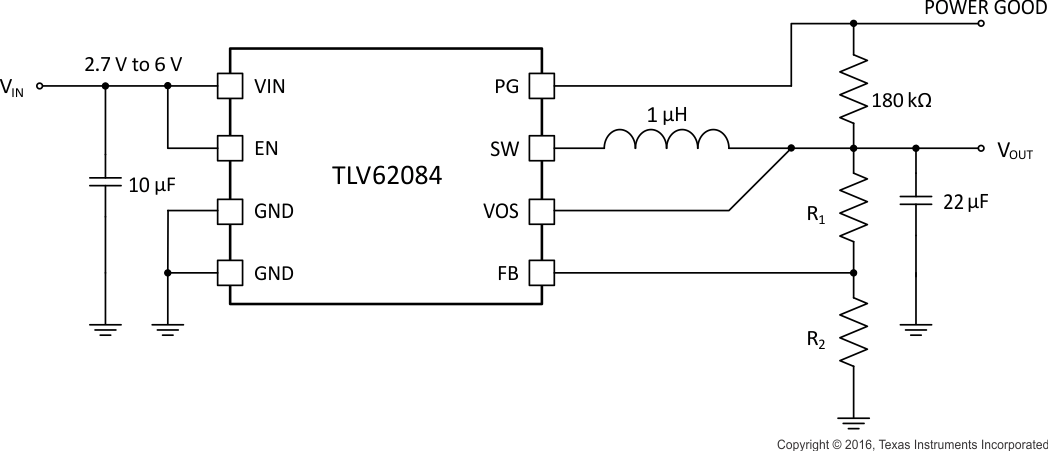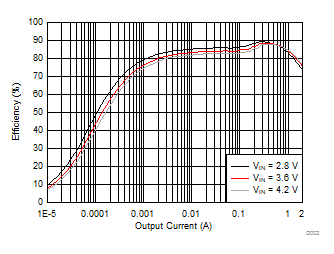ZHCS484H October 2011 – January 2017 TLV62080 , TLV62084 , TLV62084A
UNLESS OTHERWISE NOTED, this document contains PRODUCTION DATA.
- 1 特性
- 2 应用范围
- 3 说明
- 4 修订历史记录
- 5 Device Comparison Table
- 6 Pin Configurations and Functions
- 7 Specifications
- 8 Detailed Description
- 9 Application and Implementation
- 10Power Supply Recommendations
- 11Layout
- 12器件和文档支持
- 13机械、封装和可订购信息
1 特性
- DCS-Control™架构,用于快速瞬态稳压
- 2.5V 至 6V 输入电压范围 (TLV62080)
- 2.7V 至 6V 输入电压范围(TLV62084 和 TLV62084A)
- 100% 占空比,以实现最低压降
- 用于实现轻载效率的省电模式
- 输出放电功能
- 电源正常输出
- 热关断
- 采用 2mm x 2mm、8 引脚晶圆级小外形无引线 (WSON) 封装
- 有关改进的 特性 集,请参见 TPS62080
- 使用 TLV6208x 并借助 WEBENCH® Power Designer 创建定制设计方案
3 说明
TLV6208x 系列器件是小型降压转换器,所用外部组件较少,可实现具有成本效益的解决方案。此类器件属于同步降压转换器,其输入电压范围为 2.5V/2.7V(TLV62080 为 2.5V,TLV62084x 为 2.7V)至 6V。TLV6208x 器件专注于在宽输出电流范围内实现高效降压转换。该转换器在中等至高负载条件下采用脉宽调制 (PWM) 模式,而在轻载电流条件下自动进入省电模式,从而在整个负载电流范围内保持高效运行。
为了满足系统电源轨需求,内部补偿电路支持在较大外部输出电容值范围内进行选择。凭借 DCS-Control™(无缝过渡至节能模式的直接控制)架构,该器件实现了优异的负载瞬态性能和输出电压稳压精度。该器件采用带有散热焊盘的 2mm x 2mm 晶圆级小外形无引线 (WSON) 封装。
器件信息(1)
| 器件型号 | 封装 | 封装尺寸(标称值) |
|---|---|---|
| TLV62080 | WSON (8) | 2.00mm x 2.00mm |
| TLV62084, TLV62084A |
- 要了解所有可用封装,请见数据表末尾的可订购产品附录。
空白
典型应用电路原理图 |
效率与输出电流间的关系(VOUT = 1.2V) |
|
|
空白 |
空白 |
|
 |
 |
|